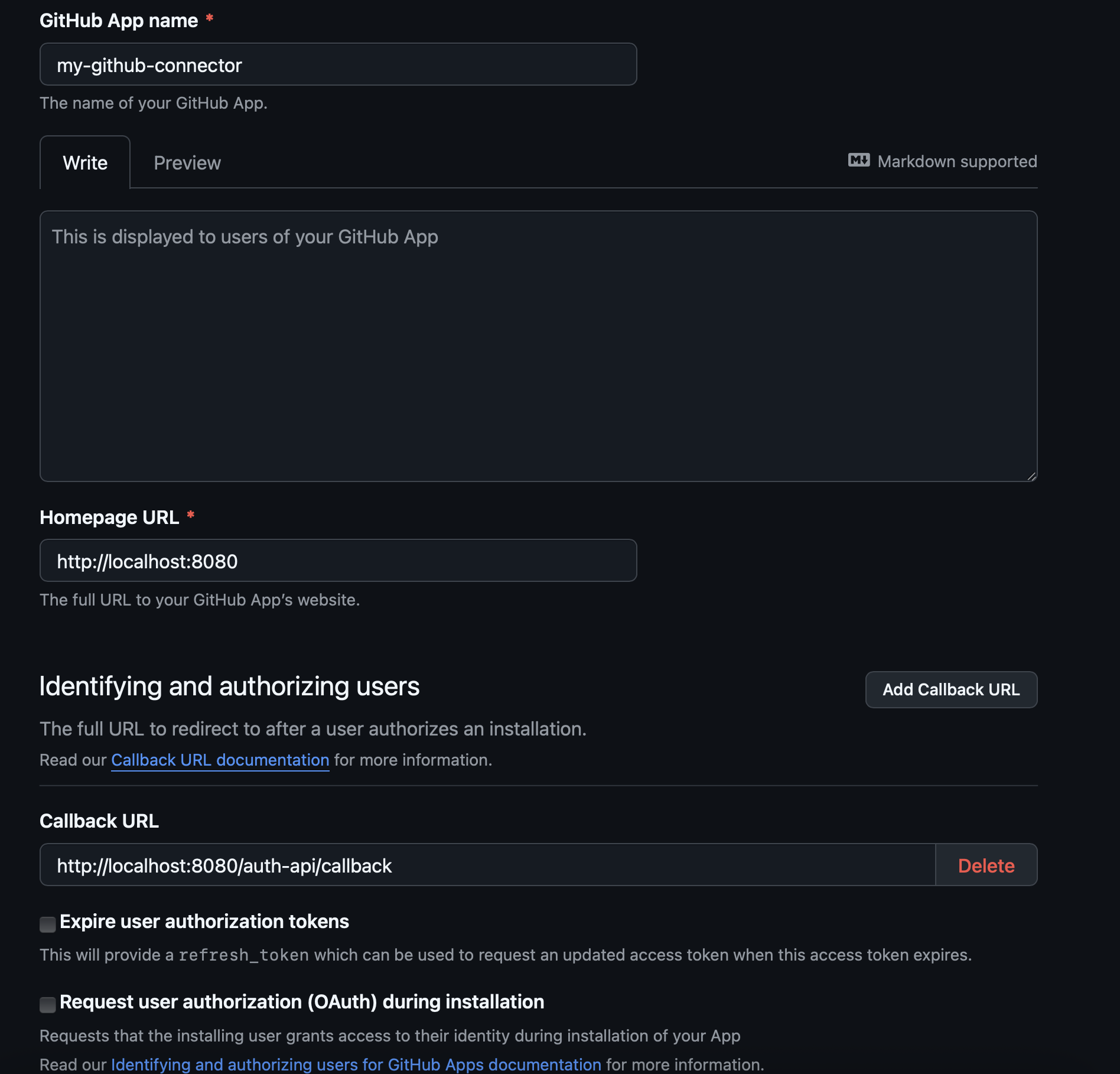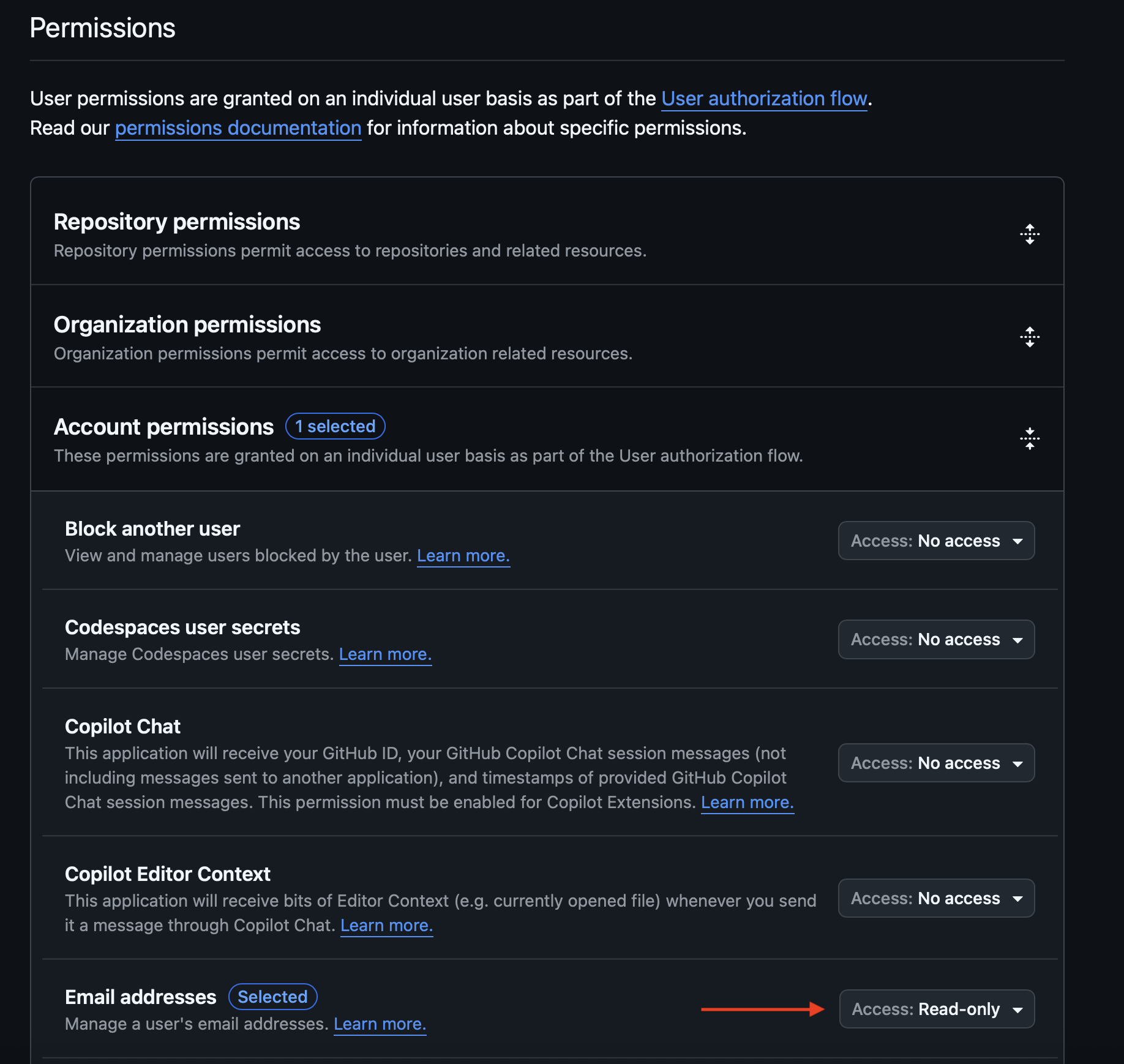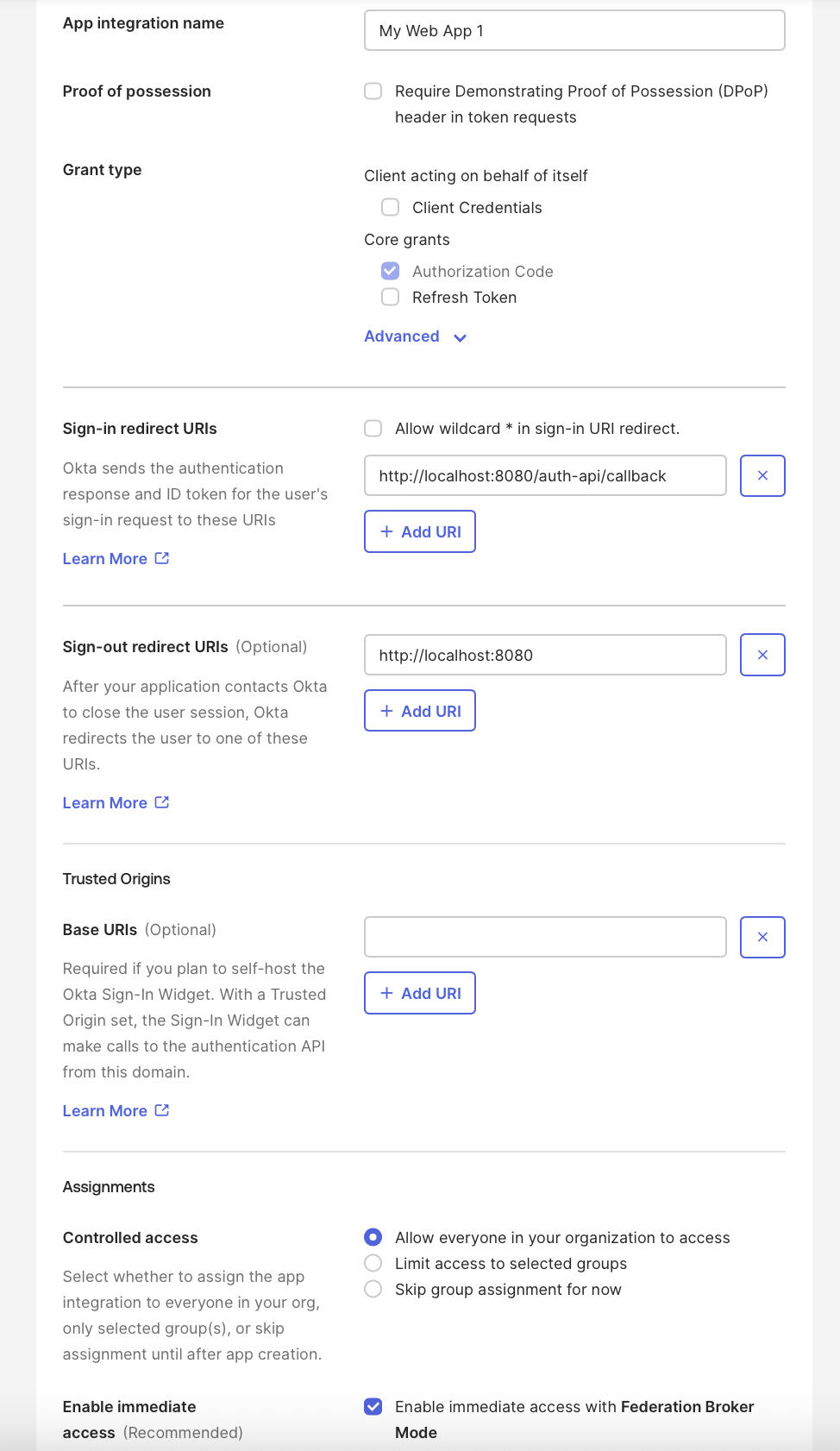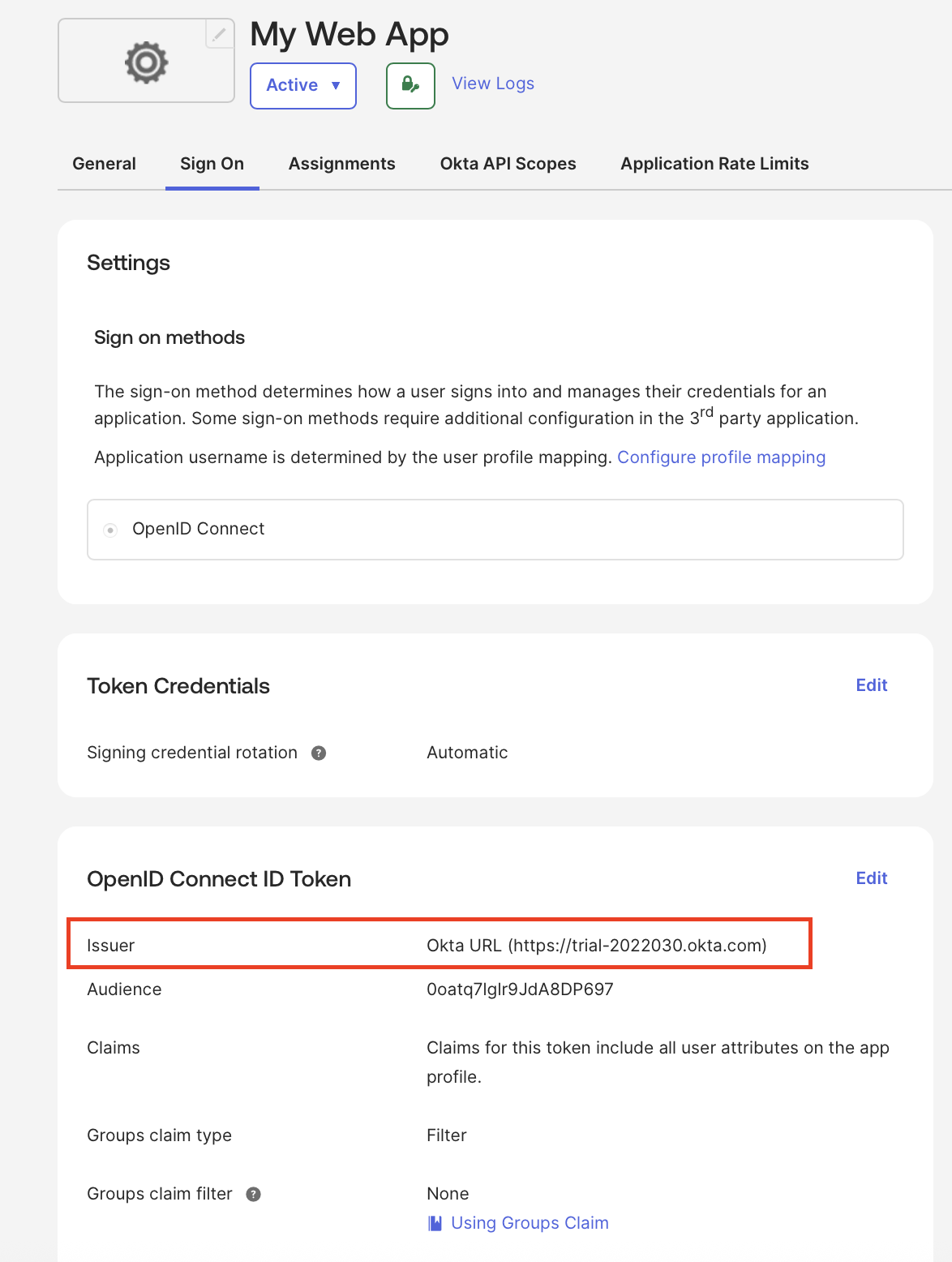Examples¶
This page provides some example configuration for different scenarios.
Auth¶
Examples for configuring different Dex connectors
Azure¶
For Azure, we recommend creating an OpenID connector.
-
Follow the steps to create the Azure App at Azure Docs
- Make sure to set the RedirectURI to
<logfire_url>/auth-api/callback - Make sure to copy the secret value when you create it
- Make sure to set the RedirectURI to
-
To finish the configuration on your Helm values file, you will need:
- Directory (Tenant) ID and Application (client) ID, you can get both of these from the Azure App overview page
- The client secret value you copied on the previous step
It should look something like this:
logfire-dex:
...
connectors:
- type: oidc
id: azuread
name: Microsoft
config:
issuer: https://login.microsoftonline.com/<tenant_id>/v2.0
clientID: <App client ID>
clientSecret: <Client secret value>
insecureSkipEmailVerified: true
Github¶
For GitHub you can use the GitHub connector
-
Follow the steps for creating an OAuth app in the GitHub docs
Note
Make sure to set the callback URL to
<logfire_url>/auth-api/callbackNote
For personal apps, setting at least email read access is required here. For Organizations, this is not needed.
-
After creating the app, on the
Generaltab at the left, at the Client secrets section, clickGenerate a new client secret, and copy the value. -
On your values file:
logfire-dex: ... config: connectors: - type: github id: github name: GitHub config: # You get clientID and clientSecret by creating a GitHub OAuth App # See https://docs.github.com/en/apps/oauth-apps/building-oauth-apps/creating-an-oauth-app clientID: client_id clientSecret: client_secret
Okta¶
we recommend creating an OpenID connector.
-
Follow the steps for creating an OIDC Okta App at Okta Docs
- Set Web Application as the Application type
- Set Sign-in redirect URIs to
<logfire_url>/auth-api/callback
-
After creating the app:
- Copy the Client ID from the General tab
- Copy the Secret value
- Go to the Sign On tab, click Edit at the OpenID Connect ID Token section and change Issuer from Dynamic to Okta URL, then copy the URL
-
Now, finish the configuration on your Helm values file, it should look something like this:
logfire-dex: ... config: connectors: - type: oidc id: okta name: Okta config: issuer: <Issuer_URL> ### This is the URL from the Sign On tab clientID: <Client ID> clientSecret: <Client Secret Value> insecureSkipEmailVerified: true



